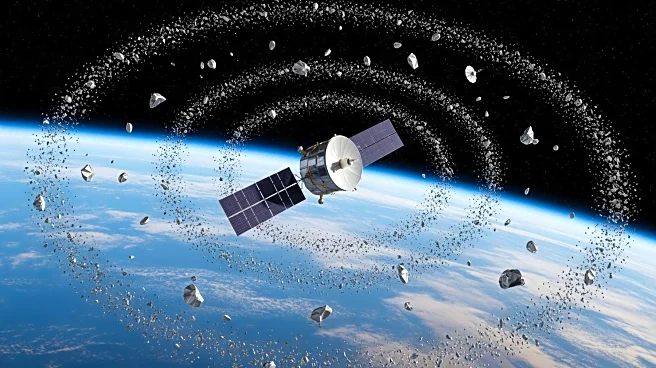What's Happening?
The European Space Agency's Swarm satellites have detected a growing weak spot in Earth's magnetic field over the South Atlantic Ocean, known as the South Atlantic Anomaly (SAA). This region has expanded
by an area nearly half the size of continental Europe since 2014, exposing satellites and astronauts to increased solar radiation. The geomagnetic field, generated by Earth's molten iron core, protects the planet from harmful solar particles. However, the weakening of this field in the SAA could lead to malfunctions and damage to spacecraft electronics, as well as increased health risks for astronauts due to radiation exposure.
Why It's Important?
The expansion of the South Atlantic Anomaly has significant implications for space exploration and satellite operations. Satellites passing through this region may experience higher rates of electronic failures, potentially disrupting communication and data collection. For astronauts, increased exposure to radiation could lead to long-term health issues, including DNA damage and cancer. As the anomaly grows, it is crucial for future spacecraft designs to account for these risks, ensuring they are 'hardened' to withstand increased radiation levels. This development underscores the importance of continuous monitoring of Earth's magnetic field to safeguard space infrastructure.
What's Next?
As the South Atlantic Anomaly continues to expand, scientists and engineers must prioritize the development of technologies to mitigate its effects. Future satellite missions may require enhanced shielding to protect against radiation, and mission planners will need to consider the anomaly's impact on satellite trajectories. Additionally, ongoing research into the geomagnetic field's dynamics is essential to understand the underlying causes of these changes and to predict future fluctuations. Collaboration between international space agencies will be vital to address these challenges and ensure the safety of space operations.
Beyond the Headlines
The growing weak spot in Earth's magnetic field raises questions about the long-term stability of the geomagnetic field and its potential for reversal. While the study found no immediate signs of a magnetic field reversal, historical records indicate that such events have occurred multiple times. Understanding the mechanisms driving these changes could provide insights into Earth's core dynamics and the future behavior of the geomagnetic field. This research highlights the interconnectedness of Earth's systems and the need for comprehensive studies to anticipate and adapt to environmental changes.











